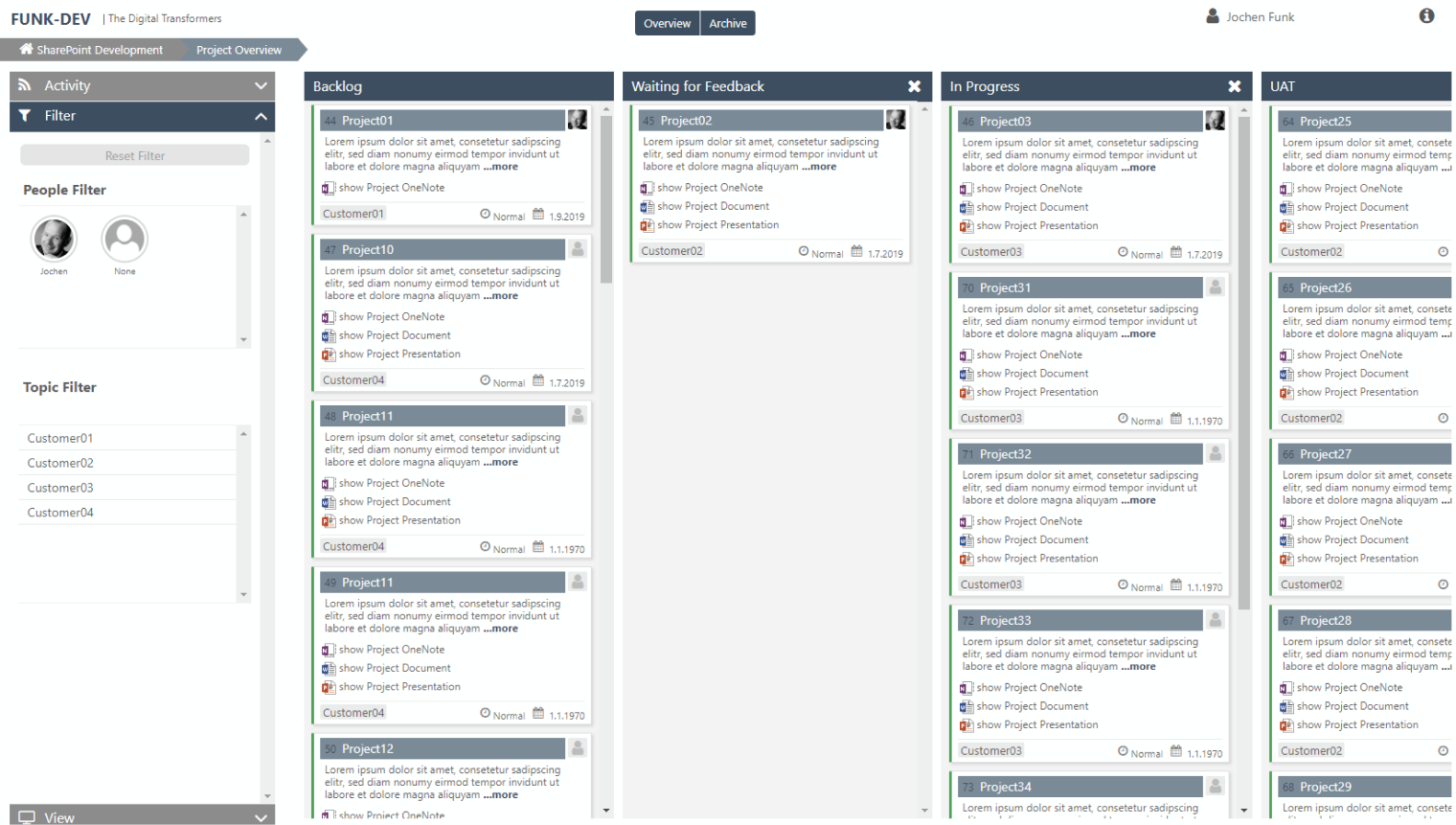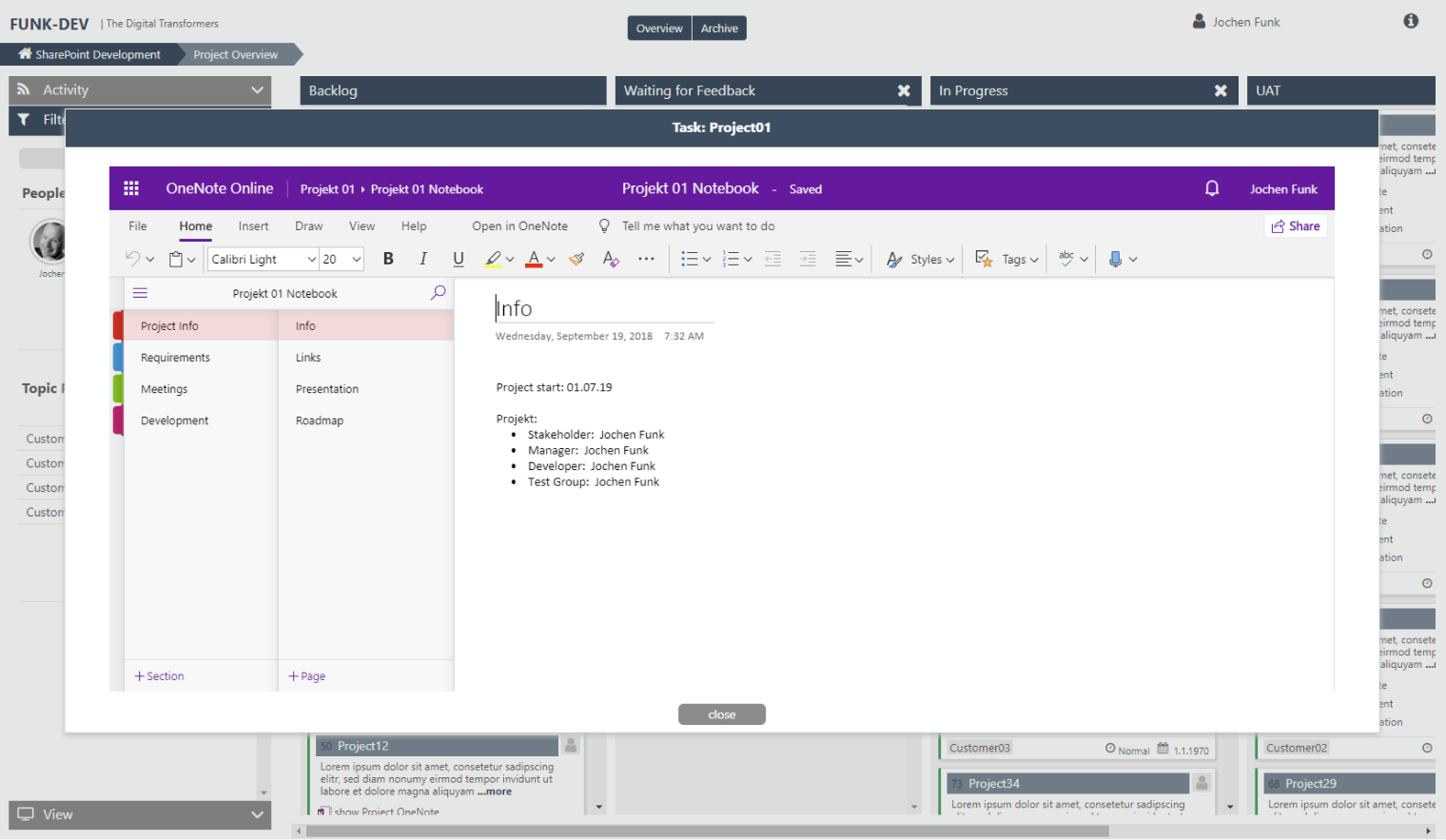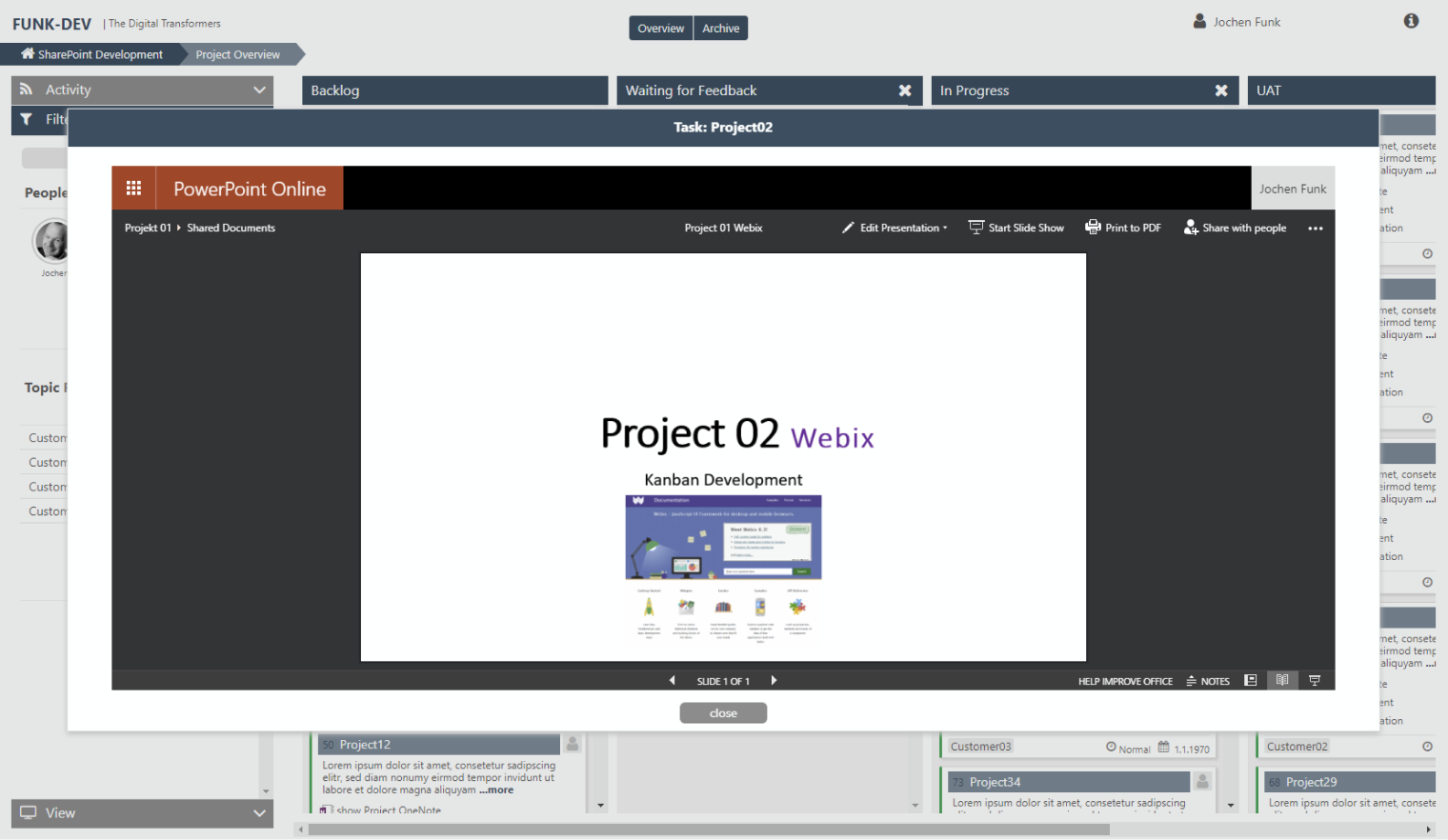We are happy to present the second interview in our new series of articles about how Webix users put their ideas into practice. If you want to share your experience in building apps with Webix, you are welcome to contact us.
Today we will tell you about Jochen who is an experienced SharePoint and Office 365 developer, consultant, and business analyst from Germany.

—Hello, Jochen! Please tell us a little bit about yourself and your experience in web development.
—I started my career as a freelance web developer in 1996 with PHP and MySQL. In 2000, I switched to Microsoft technologies with asp / asp.net, IIS, and MS SQL. In 2004, I began to specialize in Microsoft SharePoint as a developer, admin, and consultant. Since 2015, I have extended my scope to Office 365 and Azure development.
Over the years, I have seen plenty of different ways to build applications including Microsoft and open source tools. And I have been constantly searching for methods that can speed up development and increase usability.
There has always been a choice either to be free in the long-running process of building my own datagrid or deal with a limited tool which has shortcomings that are difficult to overcome. But with Webix, JavaScript, and Visual Code I can do everything ! … in a fast way and without any limits!
In general, today I have considerable expertise in developing effective business applications with a high level of usability.
—Can you describe your typical working process?
—First, my clients contact me with an idea of their business solution. For example, they want an application that will collect and process customer data needed to open an account. As soon as I get the basic requirements from my customers, I start prototyping the product (it usually takes me about 3-5 days). Since I have worked with Microsoft for many years, I prefer building my apps on the basis of SharePoint or Office 365. I think this way of app development is a very promising trend now. In general, even ordinary users can utilize SharePoint for creating sites or less complex “applications”. But SharePoint offers only the standard interface design which is not perfect. And that’s why I use ready-made business UI elements from the Webix library. They help me build fast complex applications with an outstanding design. The apps run right inside SharePoint. This is how I usually develop software products. After creating the first prototype of the application, I show it to the customer, clarify the requirements, and then refine the prototype in an agile way. Once this is done, I finalize the development of Version 1.0.
As soon as the initial prototype is ready, it’s much easier to get a realistic roadmap and calculate the costs.
—How long have you been using Webix for app development?
—I have been developing SharePoint applications with the help of Webix for more than 4 years so far.
—You have a lot of interesting projects created on the basis of Webix UI components. Let’s focus on one of them and discuss it in more detail. Tell us about your project management application based on Kanban widget.

—The application was created upon one of my clients’ requests. The purpose of this solution is to control the implementation of tasks and projects within a company. As you can see, the app runs inside SharePoint. On the Root Site you have this Kanban Overview and from there you can navigate to a specific project SubSite based on your permissions.
Without doubt, the crucial part of this solution is Webix Kanban widget that makes the app very functional and efficient. I especially like the fact that it supports drag-n-drop. Moreover, each project in Kanban contains a popup for the project wiki (OneNote), main project document (Word/Excel) and project presentation (Powerpoint) with all the necessary information about the tasks and business processes.


The important benefit of integrating the application with OneNote is the possibility to add and edit information on projects directly, e.g., in a meeting. All the changes are saved immediately and become available to everyone including customers based on their access rights. These features allow establishing an effective workflow.
Filters and an Audit Trail (activity log) are also great tools in this application. Besides, there is a section View where you can change the contents of the project and the number of Kanban lanes if you wish. The app runs on premises and in the Cloud (Office 365), which is also a significant advantage for many customers.

—Why did you decide to use Kanban widget for your application?
—In my opinion, Kanban is one of the best and most popular Webix widgets. It helps manage projects quickly and efficiently. By the way, all my customers really like Kanban widget. It is very functional and quite easy to use. There are many implementation areas for this widget.
—How long does it usually take you to develop an application with Webix?
—It depends on the project, but on average it takes me about 20-30 days to build an application of medium complexity. Within the period of 3-5 days, the first prototype is ready for discussion.
—What do you think about the Webix design? Do you use the standard design or customize it?
—I always need to customize and modify design based on my customers’ corporate identity. I use your design tool, but it’s not perfect (right now) for me. So I try to refine the look of applications using CSS.
—Why did you choose Webix?
—I have already worked with some of your competitors and I should say that I really like Webix. By the way, I’ve already brought in three new clients for you.
The most important thing for me is the ability to speed up web development. Webix really helps me save time on creating applications. One more undeniable advantage for me is a great variety of ready-to-use UI controls and complex widgets. Last but not the least, Webix extracts the logic from the underlying services. If needed, the whole application could be switched from SharePoint to other platforms with minimum effort.
—What other frameworks have you used?
—I’ve worked with Ext Js on a project and I’d like to note that it’s quite difficult. It takes a lot of time to build software solutions and integrate them with SharePoint.
Moreover, I have some React experience. This framework doesn’t accelerate SharePoint app development as Webix does. In addition, React doesn’t have a large variety of ready-made components and complex widgets.
I think that for web part development it might be a good idea to use the SharePoint Framework (SPFx).
—How did you learn about Webix?
—Honestly, I don’t remember. I have been working in the field of app development for many years. I always read a lot of specialized literature as I’m in constant search for new technologies. Probably, I’ve read somewhere about you. I remember being very impressed by a large number of UI widgets and controls that Webix JS library contains.
—What is the biggest challenge you’ve faced when using Webix for web development?
—Unfortunately, I have some difficulties with exporting large amounts of tabular data to PDF. I am currently trying to resolve this issue with your support service.
—What are the greatest advantages of Webix in your opinion?
—As I’ve already mentioned, Webix significantly speeds up web development, which is extremely important for me. Webix also stands out for its complex widgets, especially Kanban and SpreadSheet.
In addition, I like the fact that you are constantly developing, adding new elements and features, fixing bugs.
I would also like to praise your support service. Whenever I have any problems or questions, I get quick assistance and detailed answers with perfect examples.
Another valuable thing for me is the Webix Forum. This is a storehouse of useful information for developers. I always read your forum to expand my knowledge about Webix and gain new ideas for implementing my projects.
—What improvements does the Webix library need from your point of view?
—1. I think the Form widget could be improved. It should be adapted for ordinary users. Why do you need to simplify this widget? I’ll give you an example. Imagine that a developer goes to his customer to get the requirements for a future application. Obviously, the client knows the internal processes of the company much better. Therefore, I believe it’s a good idea for customers to fill/build in the information within the Form widget by themselves. And after all the information is filled in by the customer, the developer can start creating an application. Thus, a lot of time can be saved. That’s why I think the Form widget needs to be simplified as much as possible so that it can be filled/built by customers. Unfortunately, now it’s not very easy for ordinary users to find out how to do it. I believe many Webix widgets can be used by customers at the initial stage of web development.
2. The integration into Visual Code could be better.
—What are your plans for the future? Do you intend to use Webix in other projects?
—I will definitely continue developing applications with Webix UI library and integrating them with SharePoint and Office 365.
Moreover, I’m planning to open my own IT company by the end of this year. I am going to develop cloud applications focused on Microsoft products. I intend to investigate how to build artificial intelligence forms with Webix and Microsoft Cognitive Services.
Undoubtedly, Webix will be an important part of my business.
If you are a Webix user and want to tell us about your experience in creating apps, don’t hesitate to contact us with your showcases. We will be glad to write about you on our blog.



